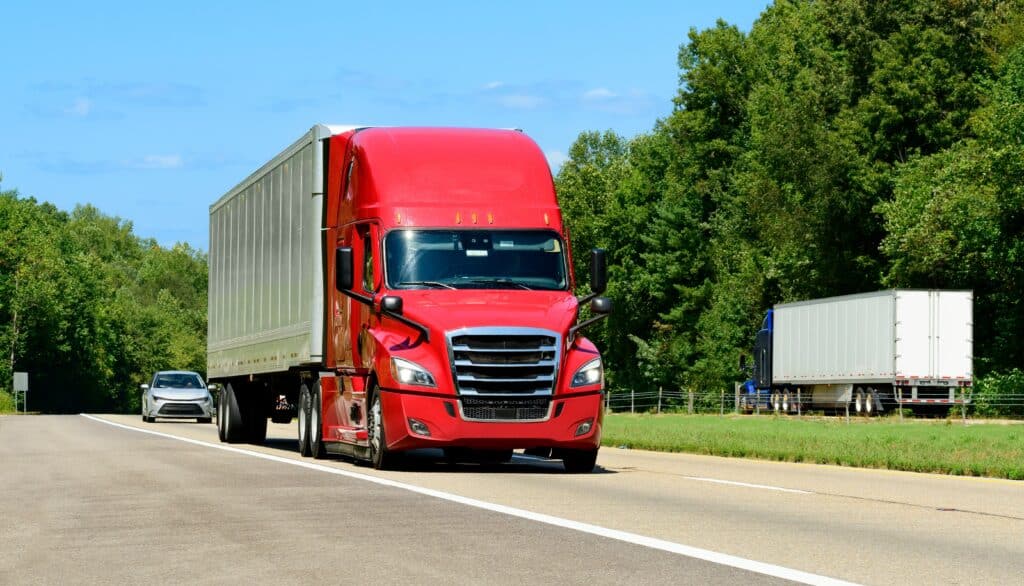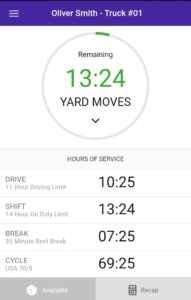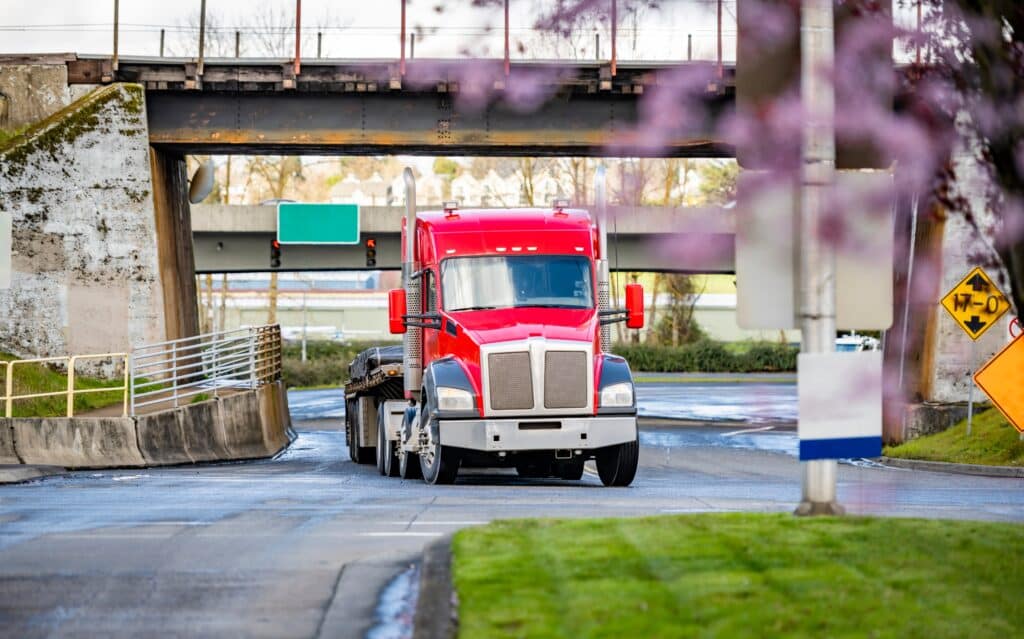For commercial truck drivers, electronic logging devices (ELDs) are more than just another piece of technology — they’re essential tools that directly impact compliance, efficiency, and financial bottom line. Choosing the best app to log driving hours can mean the difference between smooth operations and frustrating roadside inspections, unnecessary violations, or even being placed out of service. With the FMCSA mandate requiring electronic logging devices, drivers and fleet managers must carefully evaluate their options to find a solution that works reliably day after day.
The ELD marketplace is crowded with options, but not all logging apps are created equal. Many drivers face frustration with frequent disconnections, complicated interfaces, and poor customer support when they need help most. These issues aren’t just inconveniences — they can lead to violations, lost driving time, and added stress during an already demanding job.
This article will cover the best features to look for in an ELD app, common issues truckers face with electronic logging solutions, and why HOS247 has become a top choice for commercial drivers who need a reliable, user-friendly system.
Do you have any questions? Talk to ELD Advisor: 650-405-3372 or Request Callback
Why Logging Driving Hours Correctly Matters
The main purpose of ELDs is to ensure compliance with hours of service (HOS) regulations. These rules are federal mandates with serious consequences for violations. HOS violations can result in hefty fines during roadside inspections that directly impact the bottom line.
Beyond the immediate financial hit, HOS violations affect CSA (Compliance, Safety, Accountability) scores. Lower scores can lead to more frequent inspections, higher insurance costs, and even lost business as shippers look at safety ratings when choosing carriers.
Using a reliable ELD app helps ensure driving hours are logged accurately, prevents unintentional violations, and provides clear documentation during inspections. Research shows that proper electronic logging creates transparency that improves efficiency and compliance.

Preventing Driver Fatigue: Safety on the Road
HOS regulations exist for a good reason—to prevent driver fatigue, one of the leading causes of commercial vehicle accidents. The FMCSA established these rules based on research showing that proper rest periods are essential for safe driving.
Electronic logging devices help enforce these mandatory rest periods. A good ELD app clearly shows available driving hours and required breaks, helping drivers plan routes safely and avoid the pressure to drive beyond legal limits. This protects not only the driver but everyone else on the road.
The automatic recording of driving time ensures compliance with regulations designed to keep everyone safe. With electronic logs, drivers can focus on being efficient within the legal timeframes while maintaining safety.
Simplifying Record-Keeping: Operational Efficiency
Beyond compliance and safety, electronic logbooks streamline paperwork for both drivers and fleet managers. Before the ELD mandate, drivers spent significant time maintaining paper logs, often dealing with discrepancies and making sure all documentation was properly completed and stored.
With a quality ELD app:
- Driving time is recorded automatically when the vehicle moves.
- Rest breaks and on-duty non-driving time can be logged with a few taps.
- Records are stored securely and available instantly.
- Reports can be generated quickly for audits or tax purposes.
- Vehicle inspection reports can be integrated into the same system.
This streamlining brings real benefits. Drivers spend less time on paperwork and more time driving productively. During roadside inspections, logs can be presented electronically, often reducing time spent with enforcement officers.
Electronic logging systems also simplify IFTA (International Fuel Tax Agreement) compliance by automatically tracking state mileage. This saves valuable time on calculations each quarter while improving accuracy.
The GPS features of modern ELDs provide useful data for optimizing routes and documenting detention time at shippers and receivers — information that can improve operations and potentially help recover costs from excessive delays.
By understanding why properly logging driving hours matters, it becomes clear that choosing the right ELD solution isn’t just about meeting regulations — it’s a business decision that affects safety, efficiency, and earnings every day on the road.

Must-Have Features in an ELD App
When looking at electronic logging device applications, certain features are essential, not just nice extras. These core capabilities determine whether an elog solution will be reliable or become a constant source of frustration on the road.
FMCSA-Approved Compliance
The foundation of any good ELD app is FMCSA approval. This isn’t just marketing talk — it means the device has been self-certified by the manufacturer to meet all technical requirements in federal regulations.
An FMCSA-approved ELD must:
- Connect directly to the vehicle’s engine to record driving time automatically.
- Meet specific technical specifications for data recording and security.
- Be listed on the FMCSA’s registry of self-certified devices.
Without this certification, drivers risk using a system that could be found non-compliant during an inspection, potentially leading to violations or even being placed out of service. When researching options, it’s important to verify the provider appears on the FMCSA’s official list.
Automatic Drive Detection
One of the most important features of a reliable ELD app is accurate, automatic detection of driving status. This eliminates the need for manual logging when the vehicle is moving and prevents a common compliance issue: forgetting to change duty status.
Quality ELDs detect vehicle movement and automatically:
- Switch to driving status when the vehicle reaches 5 mph.
- Record all movement time as driving.
- Prevent unauthorized editing of automatic driving time.
- Maintain accurate records even during brief stops at traffic lights.
This automation is essential for both compliance and reducing workload. With automatic status detection, drivers can focus on the road rather than remembering to update logs manually.
Stable Connectivity
Few things frustrate drivers more than unreliable connections between ELD hardware and the app to log driving time. The best ELD solutions maintain stable Bluetooth connections without frequent drops.
Good systems will:
- Reconnect automatically if connection is temporarily lost.
- Store data locally during connectivity gaps.
- Sync seamlessly when connection is restored.
- Show clear indicators of connection status.
- Use reliable Bluetooth or USB connections.
A stable connection ensures continuous compliance and eliminates troubleshooting stress while on duty.
User-Friendly Dashboard
Commercial drivers interact with their ELD app multiple times daily, making a simple, easy-to-navigate interface essential. The best applications provide clear information without overwhelming complexity.
A good ELD dashboard includes:
- Large, easy-to-read displays of available hours.
- Simple status change options with minimal taps.
- Clear view of daily log information.
- Simple navigation between features.
- Readability in various lighting conditions.
- Quick access to essential functions.
The dashboard should show current status, remaining hours, and potential compliance issues at a glance without requiring drivers to search through complex menus or tiny text.
Clear Violation Alerts
Warnings about potential HOS violations help drivers avoid compliance issues before they happen. Well-designed ELD apps provide alerts when approaching duty time limits or mandatory breaks.
Effective alert systems:
- Notify drivers before violations occur, not just after.
- Include both sound and visual warnings.
- Explain which regulation might be violated.
- Give enough advance notice to take action.
- Show countdown timers for required breaks.
- Alert both drivers and fleet managers to potential issues.
These alerts are preventive tools, helping drivers make informed decisions about schedules and rest periods.
Reliable Customer Support
Even the best technology sometimes needs help, making good customer support critical when selecting the best app for logging driving hours. This becomes especially important during roadside inspections or when facing compliance issues.
Quality support includes:
- Multiple contact options (phone, email, chat).
- Support available evenings and weekends.
- Help in multiple languages for diverse drivers.
- Support staff who understand FMCSA regulations.
- Fast response times for urgent problems.
- Help with both technical and compliance questions.
Many drivers say that customer support quality is the deciding factor in their satisfaction with an ELD provider, particularly when troubleshooting issues that could affect compliance or available driving time.
Best Apps for Logging Driving Hours
The market for electronic logging devices has matured since the mandate took effect. While all FMCSA-registered devices meet basic requirements, several factors separate the top performers, including:
- Hardware reliability. The physical components connecting to the vehicle’s diagnostic port vary in quality and durability. Premium providers offer robust hardware designed to withstand vibration and temperature changes common in trucks.
- App stability. Some applications run reliably in the background without frequent interruptions, while others may require more attention. The best apps to log driving hours work consistently without crashes or freezes.
- Ease of inspection. During roadside inspections, quickly displaying logs and transferring data to safety officials is crucial. Top-rated apps offer a dedicated “inspection mode” that organizes required information for efficient reviews.
- Additional features. Beyond basic logging, leading providers offer extras such as IFTA mileage tracking, GPS fleet monitoring, vehicle diagnostics, and document management—all through the same interface.
- Contract terms. Some providers require long commitments with early termination fees, while others offer flexible month-to-month options that allow for adapting to changing needs.
- Support quality. The knowledge and availability of customer support staff varies dramatically across providers. Industry leaders offer dedicated support from staff who understand both the technical aspects and regulatory requirements.
To help you navigate through options, we have compiled a list of apps to log driving hours and their ratings on app distribution platforms:
| RANK | ELD PROVIDER | iOS APPSTORE | ANDROID PLAYSTORE |
|---|---|---|---|
| 1 | |||
| 2 | Motive | ||
| 3 | JJ Keller | ||
| 4 | BigRoad | ||
| 5 | Garmin | ||
| 6 | Rand McNally | ||
| 7 | Geotab | ||
| 8 | |||
| 9 | Transflo | ||
| 10 | PeopleNet | ||
| 11 | Verizon | ||
| 12 | Stoneridge | ||
| 13 | Teletrac | No iOS app | No Rating Yet |
When selecting from among the leading options, features most relevant to your operation are important, while making sure reliability and compliance are fully satisfied.
Why Truckers Choose HOS247 for ELD Compliance
As truckers gain experience with electronic logging devices, many realize that not all providers deliver the reliability and support they need. Frequent connectivity issues, hidden fees, and poor customer service are common frustrations. HOS247 has built a reputation as a trusted ELD provider by offering a dependable, transparent, and driver-friendly solution.
- User-friendly app. The app is designed for easy navigation, allowing drivers to manage logs, update duty status, and access records with minimal effort. Features like automatic duty status updates, clear violation alerts, and a one-tap DOT inspection mode simplify compliance and reduce errors.
- Reliable performance. Our ELDs maintain a stable Bluetooth connection to prevent lost data and reconnection issues. The system syncs logs instantly and continues tracking even when offline, ensuring uninterrupted service in remote areas.
- No long-term contracts. Unlike many providers that lock truckers into multi-year contracts with high termination fees, we offer flexible month-to-month or yearly plans. Customers stay because of performance, not because they’re forced to.
- Two-week trial period. Truckers can test the system risk-free for two weeks. If it doesn’t meet their expectations, they can return it—no questions asked.
- Multilingual customer support. Our reps provide live assistance in English, Spanish, Russian, and Polish, seven days a week. Unlike providers with long wait times and automated responses, our callback policy ensures that if a call drops, we call back, so drivers never have to restart the process.
- Transparent pricing. HOS247 operates with straightforward pricing and no hidden fees. The subscription model includes all essential features without surprise charges for critical functions.
- Integrated fleet management features. In addition to compliance, we offer real-time GPS tracking, IFTA calculations, and vehicle maintenance reminders to help fleets improve efficiency and reduce downtime.
By focusing on reliability, ease of use, and superior customer support, HOS247 has become a preferred ELD provider for truckers and fleet managers looking for a stress-free and cost-effective solution.
How to Switch to HOS247
Making the switch to a new ELD provider might seem challenging, especially for drivers and fleets currently using another system. However, HOS247 has streamlined the transition process to minimize downtime and confusion.

Step-by-Step Transition Guide
The process of switching to HOS247 follows these straightforward steps:
- Select a plan. Choose the appropriate package based on fleet size and feature requirements.
- Order equipment. Once registered, HOS247 ships the necessary hardware promptly.
- Download the app. The HOS247 logbook app is available for both Android and iOS devices.
- Install the ELD device. The compact device connects directly to the vehicle’s diagnostic port – typically a 9-pin connector for heavy-duty trucks or an OBDII port for lighter vehicles.
- Connect and configure. Pair the ELD device with the mobile app via Bluetooth or USB cable.
- Transfer previous records. Import logs from the previous provider to maintain compliance with record-keeping requirements.
- Begin using the system. Start recording hours of service with the new system.
Most drivers find they can complete the physical installation in under 10 minutes, with the entire transition process taking less than an hour. The system is designed for simple installation without requiring special tools or technical expertise.
Conclusion
Selecting the right application for logging driving hours impacts daily operations, compliance status, and overall job satisfaction for commercial drivers.
For professional drivers, ELD reliability isn’t just about convenience — it’s about livelihood. When an electronic logging device fails, hours may be recorded incorrectly, inspections can become complicated, and valuable driving time gets lost to troubleshooting.

The best app to log driving hours balances compliance with FMCSA regulations, intuitive operation, reliable performance, accessible support, and fair pricing without long-term commitments. HOS247 delivers on these key requirements with flexible plans, multilingual support, and a track record of reliability.
With its strong reputation for quality, support, and driver satisfaction, HOS247 continues to be a leading choice for commercial drivers seeking a reliable elog solution that performs consistently mile after mile.

As an expert in B2B and B2C sales, I’ve dedicated myself to perfecting sales processes and client retention strategies in the logistics and trucking industry. I have significantly contributed to the expansion of the ELD service, catering to retail and wholesale clients in need of HOS247 ELD solutions. My unwavering commitment to implementing state-of-the-art sales techniques and technologies ensures the continuous growth and success of businesses I work with.












Hours of service records have been a part of truckers’ jobs for many years. Since HOS rules became law and up until the ELD mandate was passed, paper logs were the way to keep records of duty status. Drivers would

Commercial driver logs have become an integral part of the trucking industry. These records are a vital tool for monitoring driver activities and ensuring compliance with regulatory standards. By recording a driver’s hours of service (HOS) and duty status, they

Since the electronic logging device (ELD) mandate went into effect, many local drivers have found themselves navigating a system built primarily with long-haul operations in mind. Designed to enforce hours of service (HOS) rules more accurately, the mandate requires most